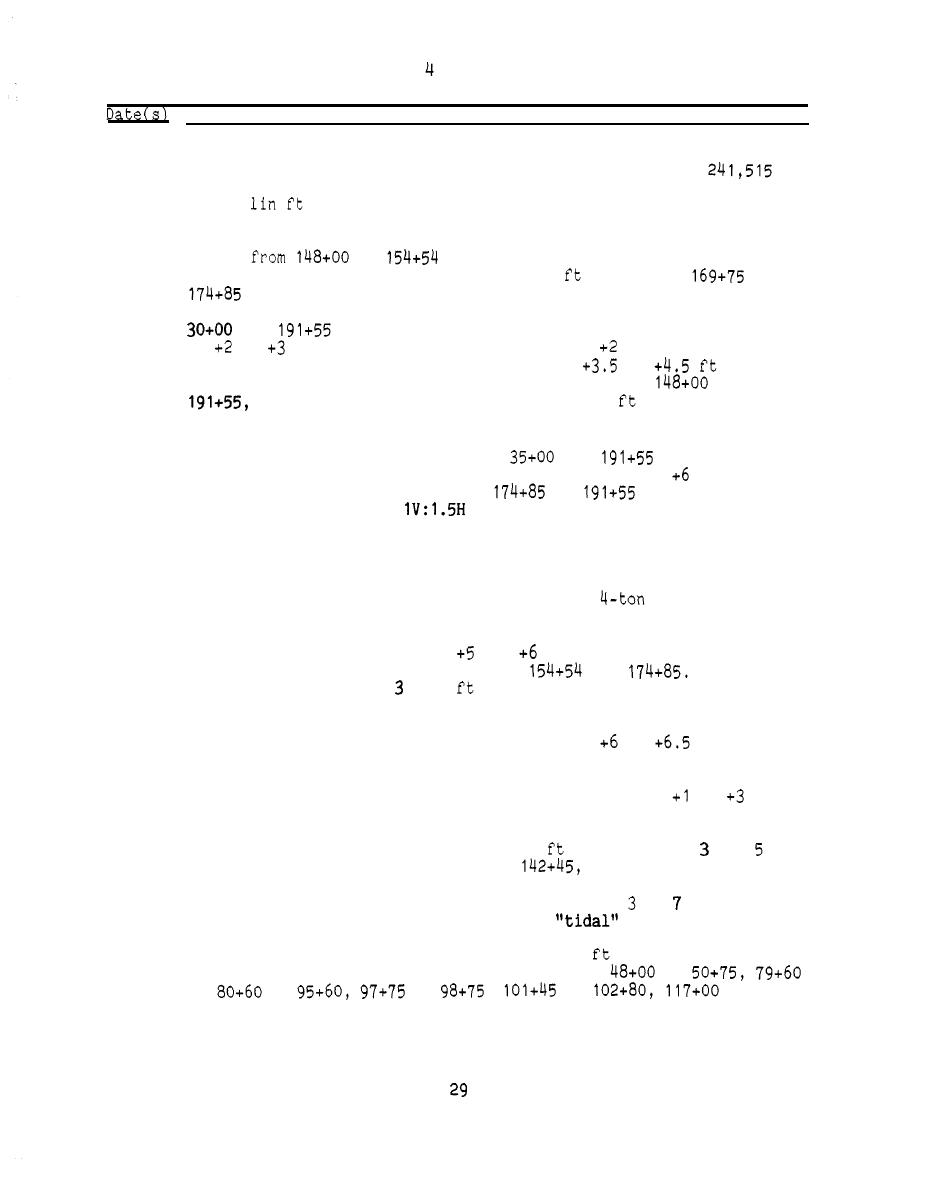
(Continued)
Construction and Rehabilitation History
1940-
The majority of jetties' maintenance consisted of placing stone on
1949
the east jetty in 1940, 1941, 1948, and 1949. A total of
tons of stone was placed on jetty sections totaling approximately
at a cumulative cost of ,648,000. Other east jetty
18,000
repairs were made in 1946 by placing about 6,960 tons of asphalt at a
cost of ,800. In 1942, the west jetty was capped with concrete
blocks
to
and intermittent concrete blocks (alter-
nate block and gap sections were 20 to 25
long) from
to
at a cost of ,300. (The capping was to have extended to
the seaward end.) A September 1947 survey of the west jetty between
and
(seaward end) showed typical center-line elevations
of
to
ft mlg over the landward half and
to - 1 ft mlg over
.
the seaward half ( 1942 capped sections were
mlg) A
to
subsequent survey, taken during August 1949 between
and
showed a general settlement of 1 to 1.5
compared to the
1947 survey.
1950-
The west jetty was repaired between
and
by placing con-
1952
crete blocks and armor stone to a design elevation of
ft mlg. In
1950, armor stone was placed from
to
with a design
crown width of 6 ft and
side slopes. Rectangular capstones,
weighing 10 tons or more, were placed on top of the existing concrete
cap. Rectangular (as opposed to irregularly shaped) capstone was
used to create a relatively impervious jetty and to provide a suit-
able base for possible future concrete capping. Side slopes were
built up on a layer of riprap stone, 25- lb to
core stone, and a
cover layer of 5- to 10-ton stone (buttressing the capstones).
Approximately 35,000 tons of stone were used, and the actual center
ft mlg. Also completed in
and
line elevation varied between
1950 was the concrete capping between
The precast
and
blocks were 5 ft wide, to 7
high, and weighed 10 tons or more.
The blocks were keyed (tongue and groove) on their ends and top, and
once positioned were grouted with additional concrete. The capped
section had typical center-line elevations of
to
ft mlg.
During 1951-1952, the remaining section, 11,954 ft in length, was
capped with concrete blocks. (A survey of this section, taken in De-
cember 1950, showed typical center-line elevations of
to
ft
mlg.) The construction method was similar to the 1950 capping, using
precast keyed blocks which were grouted in place. The blocks were
specified to have a minimum length of 8
and widths of and ft
respectively. The
on the landward and seaward sides of
actual average length of the blocks was 15 ft, their weight varied
from 10 to 16 tons, and their height varied from to ft. On 18
March 1952, prior to jetty completion, a
wave dislodged
180 blocks. At the time, all blocks were in place, but grouting had
not been completed. A total length of 2,815
of cap blocks was
reset and grouted at the following locations:
to
,
to
to
to
to
to
(Continued)



 Previous Page
Previous Page
